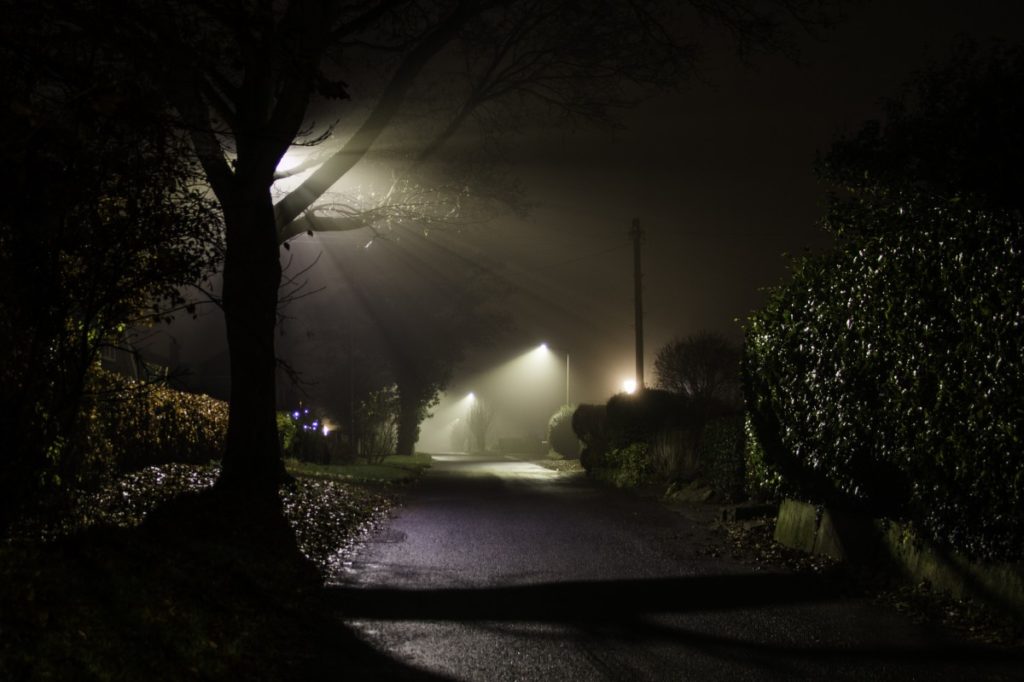
Guest post by
Heidi Adams | Team BASEstud.io
Founder CEO & CCO
LightFair 2023 Speaker
Don’t miss the workshop, “Empowering More Equitable and Accessible Cities, the Smart and Sustainable Way,” L23W06, Sunday, May 21, 2023 at 9:00am.
No doubt about it. Our longstanding history of polluting the environment has all but guaranteed a long-term change in average weather conditions that poses an ever-increasing threat to planetary health and wellbeing.
The good news, however, is that while climate change is here to stay, it’s not too late to stem the tide. In fact, scientific research reveals that we can still limit and potentially avert – the worst of its effects, by building climate-resilient communities grounded in evidence-based mitigation and adaptation strategies.
For example, we could adapt to inevitable weather disasters – like hurricanes, floods and wildfires – by designing sustainable infrastructure that can withstand their impact. Or on the mitigation side, we can significantly limit greenhouse gas (GHG) emissions by adopting renewable energy sources and promoting electric vehicles.
Multisolving for Equitable Climate Change Response
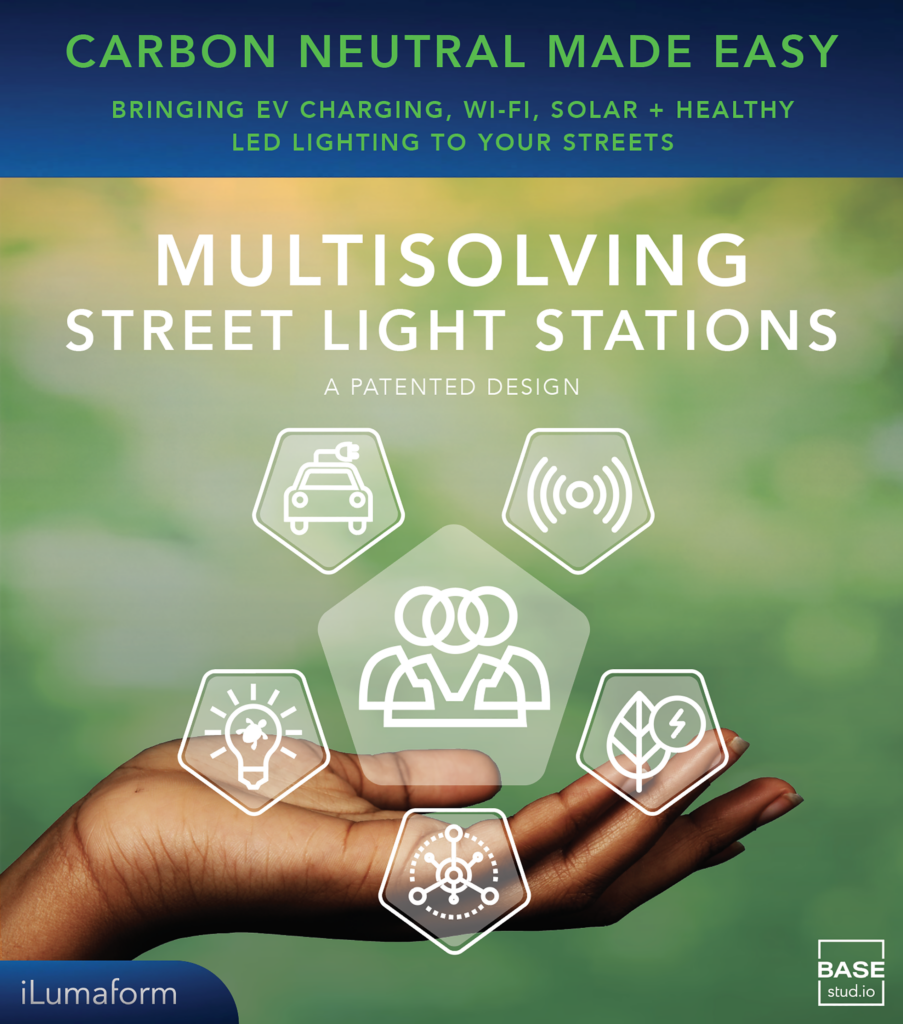
Of course, in building resilient communities, we must also prioritize solutions that ensure climate justice for those most vulnerable to the impact of climate change. And in doing so, we may simultaneously address both the root causes of climate disruption and the broader issues of social, racial and environmental justice. That will mean choosing solutions that promote equity and inclusion; safeguard access to basic resources; and cultivate clean, healthy environments for all.
But in an era of escalating challenges and shrinking budgets, governments are being forced to do more with less, thereby motivating them to explore sustainable solutions that not only tackle multiple problems at once, but also promise equitable benefits for all communities.
Known as multisolving, it is a concept rooted in whole systems theory, which seeks to design strategic solutions that leverage the relationships among the component parts of a comprehensive issue. And as climate change continues to intensify, it is becoming an ever more popular approach for bringing leaders together from across all sectors to identify and invest in innovative products and services that accomplish many goals at once to the benefit of all.
And that’s where street lighting systems come into the picture.
Smart Street Lights as Critical Infrastructure
Street Lights have long played a vital – but often underappreciated – role in our country’s infrastructure, dating back to 1757 when Ben Franklin introduced his version in the form of oil candles ensconced in flat glass panels.
The United States has since pioneered a long line of inventive lighting solutions, from gas and electric, to mercury vapor and high pressure sodium lights, to light-emitting diode – or LED. And most recently, the Internet of Things has jump-started the development of so-called “smart” street lighting systems.
These future-forward systems combine energy efficient LED with intelligent technology that enables them to remotely monitor and control functionality in real-time, using customized software capable of collecting reams of useful data. Not surprisingly then, they provide a host of notable benefits, from reducing energy consumption by as much as 80% to continuously monitoring environmental, traffic and parking conditions.
On the other hand, most of these smart systems are still designed primarily for illumination – rather than for multiple functions – using one-color, cold blue LED lighting, which exacerbates the harmful environmental impact of light pollution. Moreover, they cannot be manufactured and installed either quickly or economically, and are not optimized for adaptation and mitigation.
Lighting the Way to a Sustainable Future
Of course, with the right design and the latest technologies, we could create multi-purpose smart streetlights that as critical components of sustainable infrastructure, would go a long way in helping us wage the fight against climate change. Street Lights that are energy-efficient, eco-friendly and economical; adaptable, durable and structurally sound under any weather conditions.
Toward that end, these luminaires could help our communities phase out fossil fuels in favor of renewable energy sources, while reducing light pollution and enhancing awareness around air pollution levels. Equally important, they should be designed to facilitate environmentally sound manufacturing methods and materials proven to produce climate resilient infrastructure on demand, which can be mass-customized to equitably meet individual community service needs.
To accomplish this mission within the context of multisolving, the next generation of smart street lighting systems should incorporate features that achieve the following mitigation and adaptation objectives.
Also read – related posts:
Helping Businesses Find Sustainable Lighting and Clean Energy Solutions
A Lighting Planner’s Quest for Sustainable Luminaires
Designing for Darkness
Convenient Access to EV Charging Anytime and Anywhere.
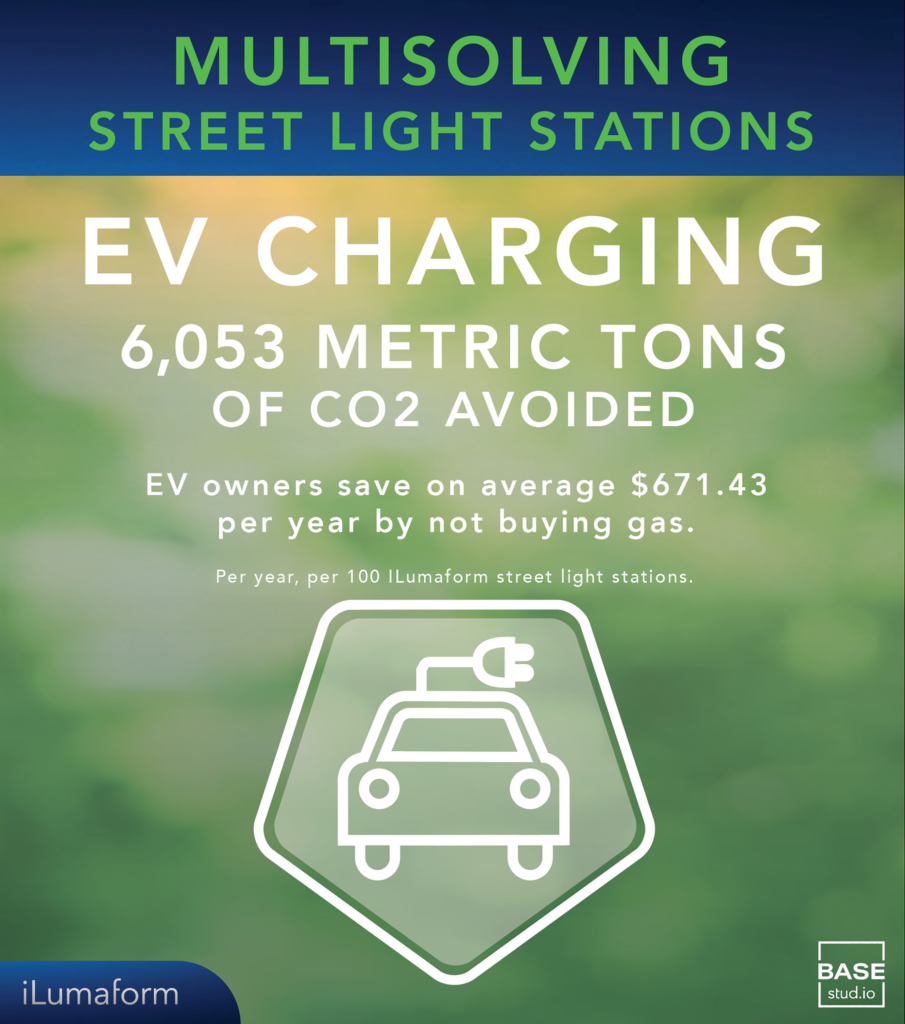
As we learn more about what’s driving the climate crisis, it is glaringly obvious that the key to tackling it lies in ending our dependance on fossil fuels – the largest source of GHG emissions. Indeed, climate change experts Kalpana Ramiah and Gary Cohen estimate that phasing out fossil fuels in the U. S. alone could save some 100,000 lives and $880 billion a year.
Not surprisingly, the transportation sector is one of the largest GHG polluters in the United States – around 27% of the total – thanks to the nearly 300 million vehicles here that are powered with fossil fuels. In addressing this challenge, the federal government has established a national goal of achieving net-zero emissions by 2050, which will mean quickly ramping up the production of electric vehicles, while greatly expanding the EV charging infrastructure.
In fact, a recent analysis from McKinsey & Company found that to equitably meet this target, we will need to install nearly 20 times the number of publicly accessible chargers currently available – an expensive proposition at best. So why not take a more cost-effective approach, by turning street light poles into curbside charging stations, which would open the EV market to everyone, regardless of where they live and when they need it.
Expanded Reliance on Renewable Energy Sources. The U.S. Environmental Protection Agency reports electric power generates some 25% of all GHG emissions, given that 60% comes from burning fossil fuels. But renewables like solar energy produce far fewer, at a much lower cost over time.
That said, smart street lighting systems should incorporate state-of-the-art solar panels, using photovoltaic batteries to capture and convert sunlight into solar energy that is not only clean and safe, but also cheaper, longer lasting and practically maintenance-free. And unlike traditional grid-tie lighting, these systems can keep lighting the way through temporary power outages and grid failures due to adverse weather events.
Reduced impact from light pollution. According to the National Institutes of Health, light pollution caused by excessive exposure to bright blue-white outdoor lighting from traditional LED bulbs results in more than a few harmful effects to both humans and wildlife.
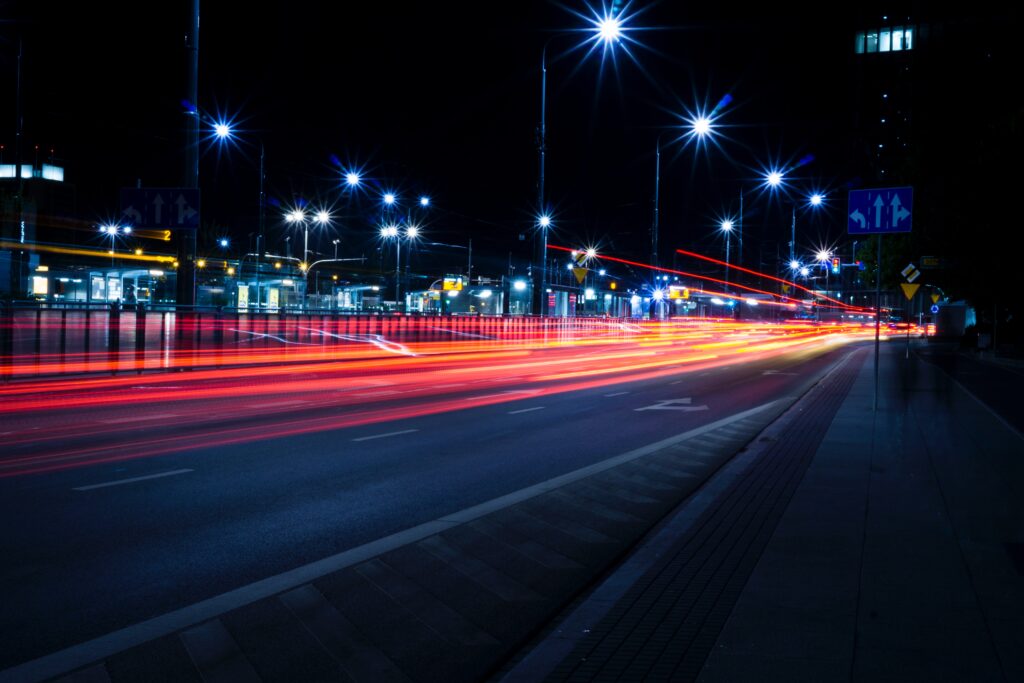
To begin with, it disrupts sleep patterns by lowering melatonin production and interrupting circadian rhythm. It also interferes with such life-sustaining wildlife behaviors as migration and breeding, while preventing trees from properly adjusting to seasonal changes. At the same time, it contributes to both climate change and air pollution by increasing carbon dioxide levels in the atmosphere and destroying nitrate radicals that help clean the air.
Smart street lights could largely reduce these effects by incorporating full-spectrum color LED filters that not only optimize energy consumption to reduce carbon emissions, but also support natural human and wildlife patterns. (Think warm yellow-red lighting for sleeping humans; green/blue for migrating birds; and amber for nesting turtles.) And to lower the glare, these luminaires should come with a variety of light intensity controls – like dimmers, timers, and motion detectors – along with sensors that continuously measure air quality for dangerous levels.
Expanded Production of Climate Resilient Infrastructure. As it stands, street lights are typically made from pure metals like steel and aluminum, using such traditional manufacturing methods as extrusion casting and injection molding – none of which is energy efficient or eco-friendly. But with the right design, we can transition to advanced fabrication methods like additive manufacturing (AM) and recyclable materials such as titanium to produce carbon neutral luminaires on demand, durable enough to withstand any weather condition.
Equally important, AM will forge new trails in mass customization, which has always been a challenge for manufacturers using traditional methods. As such, we can more effectively ensure climate justice by tailoring resilient infrastructure to meet community needs, while facilitating equitable access to life-sustaining technologies.
What’s more, by using recyclable materials, we would not only create a circular economy, we would also expand the innovation ecosystem for green manufacturing jobs and minimize the need for trans world shipping. Put simply, this approach would empower municipalities to build locally, deploy locally, and employ locally.
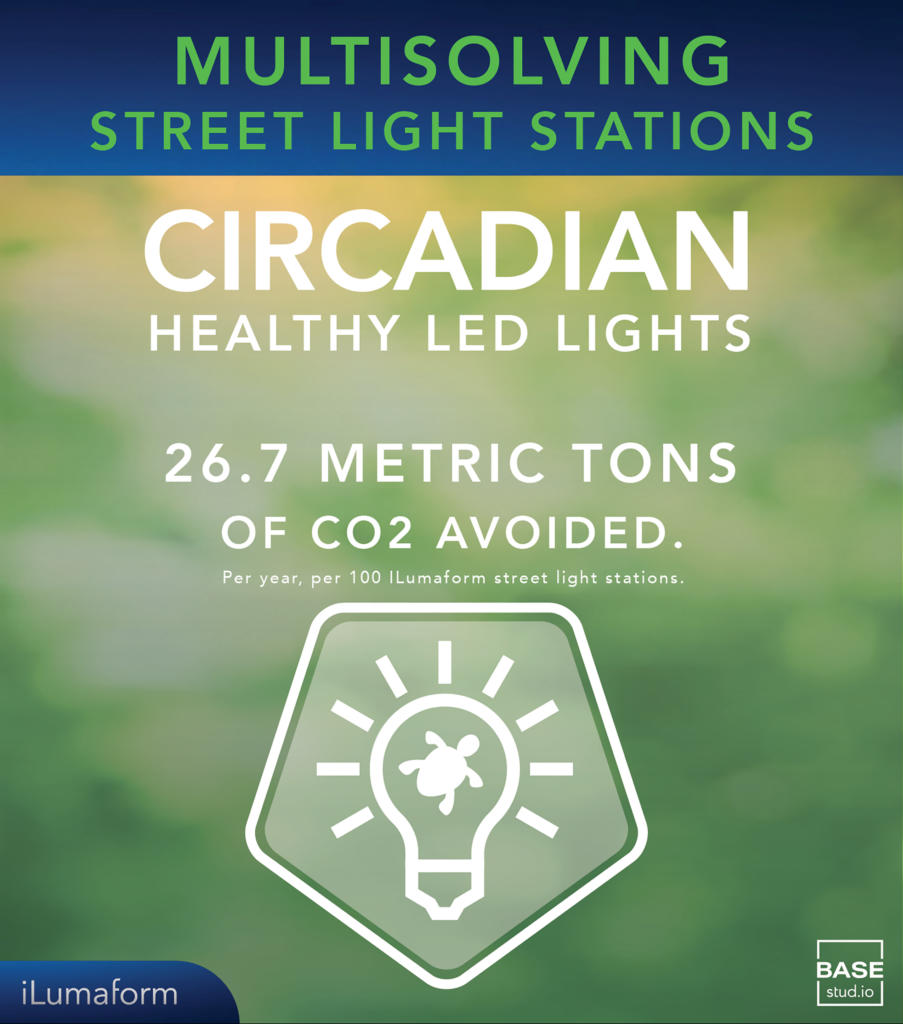
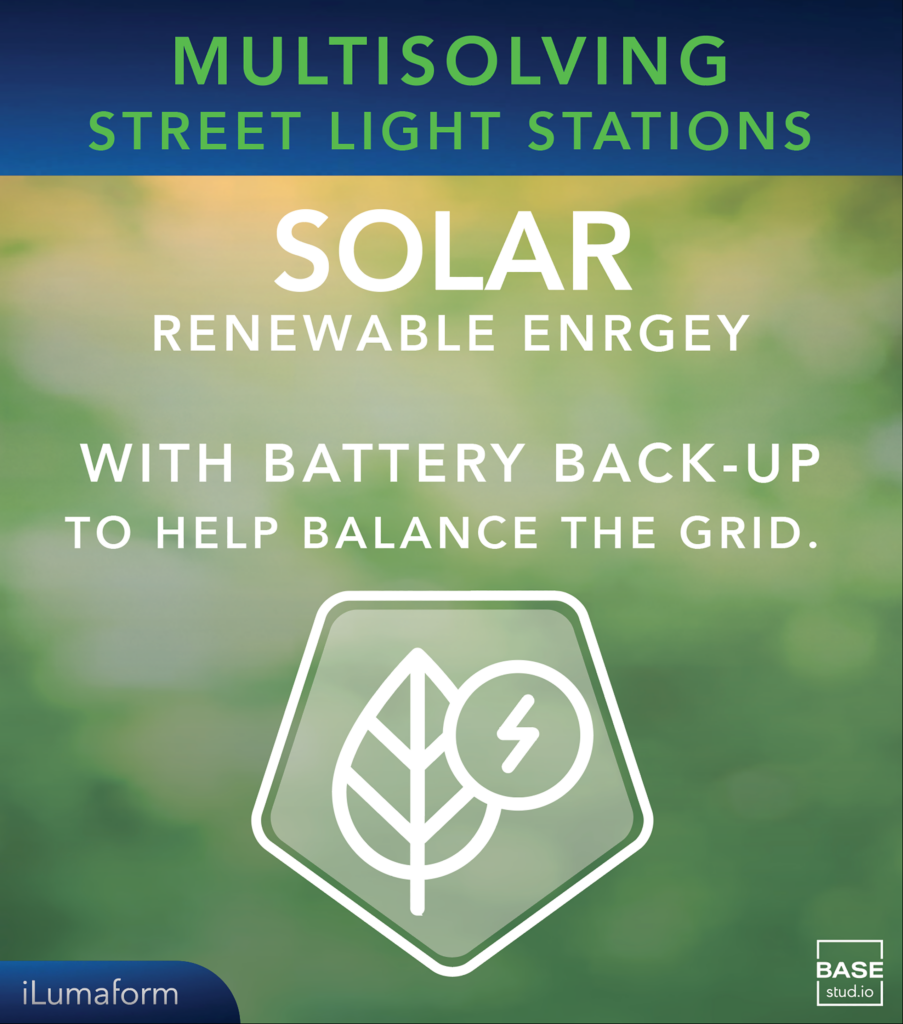
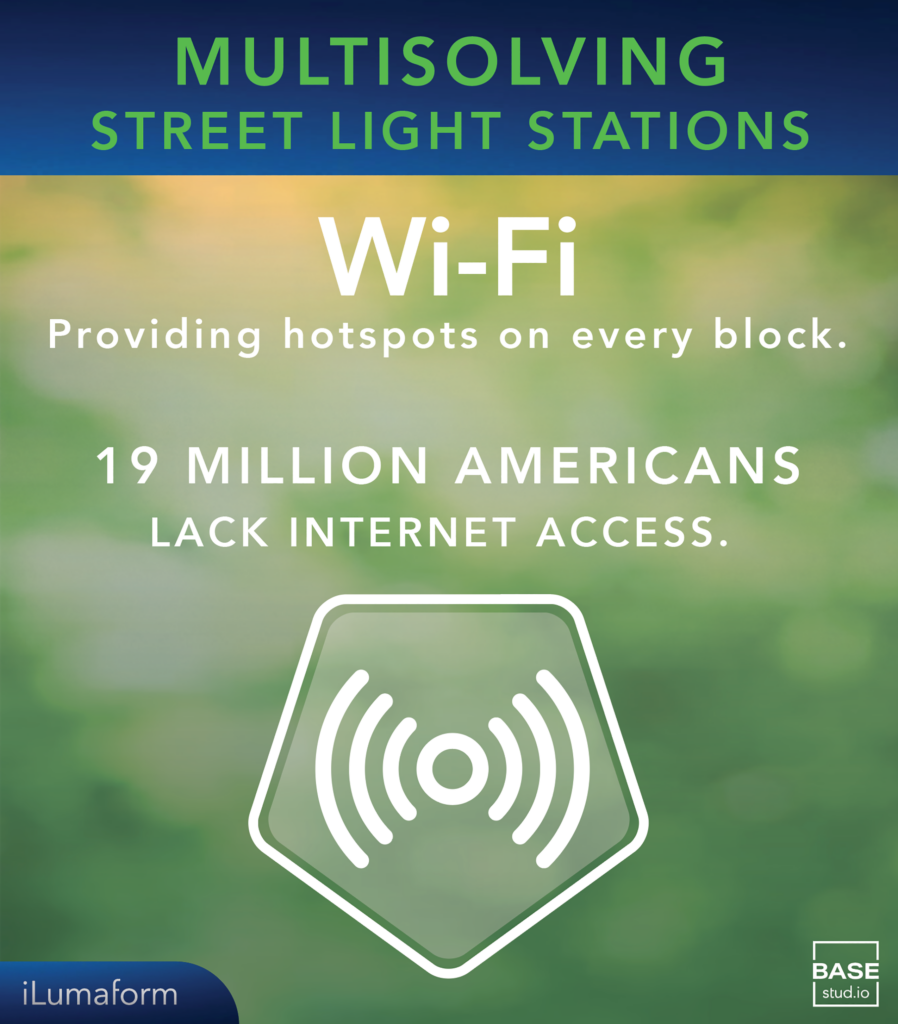
To Summarize…
In the coming decades, it will be imperative for federal, state and local governments to continue investing in resilient infrastructure that serves to mitigate and adapt to both the already harmful impact and the emerging threats of climate change. Innovative, carbon neutral infrastructure that tackles more than one of the many associated challenges, to make all communities cleaner, healthier, safer, and more attractive places to live and do business.
In meeting those criteria, multi-purpose, mass-customizable smart streetlights truly fit the bill. To be sure, the Northeast Group – a smart cities market intelligence firm – contends “street lights are becoming the backbone of larger smart city initiatives.”
But for any such investment to be truly effective, we must commit to what Elizabeth Swain, Co-Founder and Co-Director of Climate Interactive, calls the three principles of multisolving projects: 1) everyone matters, everyone is needed; 2) addressing tough problems in an integrated fashion leads to success; and 3) though large solutions start small, growth results from learning and connecting.
And that will require well-informed, future-forward thinking; whole systems design; and robust collaboration among all who have a stake in the outcome.
Continue the conversation with us at our workshop, “Empowering More Equitable and Accessible Cities, the Smart and Sustainable Way,” L23W06, Sunday, May 21, 2023 at 9:00am.
Get in touch with the author:
LinkedIn: https://www.linkedin.com/in/heidi-adams-1632a3207
Twitter: @BASEstud.io

